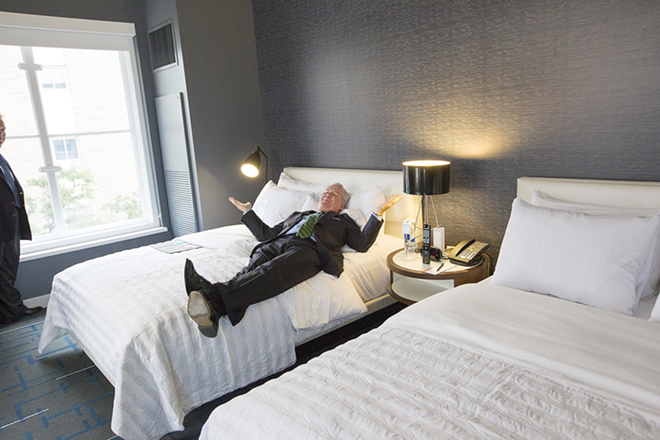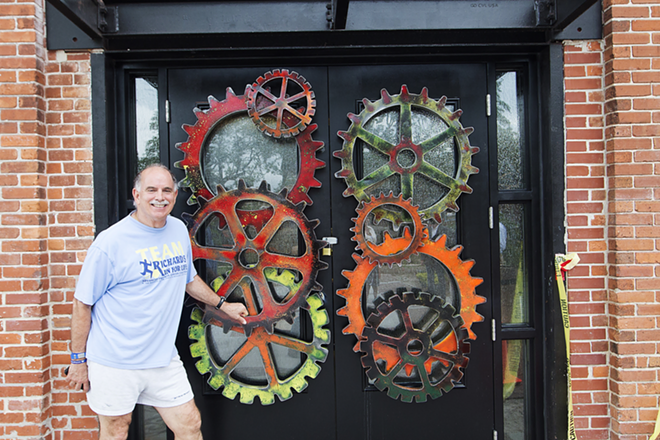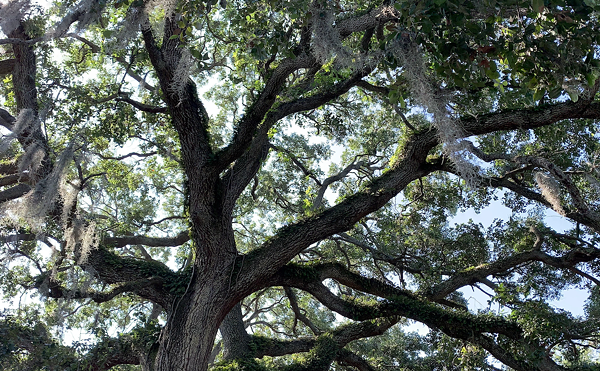
Le Méridien, the four-star hotel fashioned from the 1905 Federal Courthouse, is consciously cool. Gary Prosterman, the developer, had already successfully transformed a YMCA in Philadelphia into a Le Méredien, so he knew what he was taking on. The scale and complexity of this 105,000-square-foot structure was challenging and expensive, costing $27 million.
A graceful aspect of this massive re-do is how well the original structure morphed into a 130-room hotel. Massive corridors of separate offices became hotel rooms with modernistic bathrooms and enormous original windows sporting killer views of Sacred Heart’s windows, St. Andrew’s steeple and the Franklin Exchange’s mid-century modern grilles.
Stephanie Ferrell, the historic preservation consulting architect, affirmed that her client went for federal tax credits and applied for local property tax credits, citing that the original building fit the new use well, which is the first rule of the Secretary of Interior standards.
In a flat file in the basement, she found hundreds of pages of plans from 1902-4, including pen-and-ink drawings of light fixtures which have been reproduced as wallpaper in the lobby. The original downstairs, which I visited in my City Council days when we were debating the building’s use, was wretched. Low ceilings, rusty machinery and the ghosts of prisoners past made the space extremely unappealing.
The Le Méridien design team is to be commended for the extraordinary transformation of the basement into a chic, inviting lobby. Clever lighting, the trendy bar, and the original judge’s bench, now repurposed as a computer area, create a fashionable vibe. Amy Martz’s artwork, hung throughout the hotel, captures glimpses of Tampa with a fresh, sophisticated eye.
Outside, tables facing Florida Avenue with their crisp, white umbrellas are welcoming. When it’s less painfully hot, I plan to enjoy seeing the world pass from that prime location. The steps leading to the Corinthian columns along the portico provide the grandest welcome in town. The view from the high-ceilinged foyer through to the bar and restaurant immediately suggests an urbane, world-class venue. The rich marble walls, brass elevator and coffered ceilings refer to the building’s proud past, while the Jetsons-esque light fixtures and modern chairs keep us from getting stuck there.
Le Méridien, which is now open to the public, presents an elegant mashup of historic materials with contemporary design. After decades of standing empty, this building has re-entered the Tampa scene with a swagger.
Shifting gears (a pun on the extraordinary door created by sculptor Dominique Martinez), we turn our gaze to the dramatic conversion of a former industrial site, the City of Tampa’s original waterworks, into a fashionable restaurant and brewery. The Ulele Restaurant is stunning in its simple, strong lines and brick, steel, and wood interior.
“We played up industrial materials and used local craftsmen to fabricate the tabletops, table bases and bar counter,” commented Keith Sedita, managing partner. He worked very closely with Richard Gonzmart from the Columbia Restaurant Group to define Ulele as a deep-rooted Tampa enterprise. The philosophical commitment to Bay area sources is reflected in the locally inspired food as well as the design.
Ulele’s site, on a crook of the east bank of the Hillsborough River, offers a dramatic vista down a grassy slope, past café tables, to the river. Three separate outdoor dining areas provide different views. To the south, customers can enjoy the activity in the city’s six-acre park, which will open (like the restaurant) in August. Facing west, the manatee viewing area and charming wooden bridges over the actual Ulele Spring are visible. On the northern edge, visitors are close to the on-site brewery.
The level of investment and care directed at this previously overlooked building will undoubtedly inspire the developers of the adjacent trolley barn to step up their game as they redevelop that massive structure. All of Tampa Heights will be activated by this bold and attractive venture, coupled with the new park and soon-to-be opened Riverwalk.
On the southwest corner of Ashley and Kennedy, a savvy boutique hotel, Aloft, is about to open its International-style doors for business. This hotel brand is the younger, hipper cousin of W hotels, with smaller rooms, but pervasive wifi and attractive bars, both inside and next to the pool.
Using the original 1960s building is both green and smart. The strong mid-century modern exterior design didn’t require any updating. The rooftop bar was nixed by the city’s fire marshall, but the pool bar views of the University of Tampa’s minarets should be sharp.
Aloft’s planned opening in mid-July will give Riverwalk fans and urbanites something to celebrate — another womb with a view, expanding local choices for watching the river flow.


















